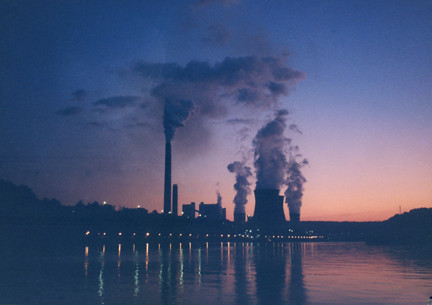At the Clean Power Listening Session, an idea was brought to the table. Someone offered that Pennsylvania makes up its aforementioned 4% “other” deficit (outlined in the Clean Power Plan article) by means of nuclear energy.
The Sierra Club opposes nuclear. Tragic events at Three Mile Island, just down the Susquehanna from where I sit, and in Fukushima, Japan have proved our fears have merit. The primary issues with this source remain uncorrected.
 |
| Three Mile Island. Photo courtesy of Savanna Lenker |
The stance will remain the same unless sufficient federal and global policies are developed to restrain energy over-use and nonessential economic growth. Changes need to be made to solve the problems with reactor operation, disposal of spent fuels, and the diversion of nuclear materials that can be use in weapons manufacture. Also, there would need to be an establishment of regulatory machinery to make sure the above conditions will be upheld.
The Sierra Club also is advocating for these changes:
1. Federal legislation to require Nuclear Regulatory Commission (NRC) licensing of both military and nonmilitary radioactive waste management facilities, including research and development facilities;
2. Federal legislation to require Nuclear Regulatory Commission regulation and control of all shipments of radioactive waste, whether of military or nonmilitary origin, and all commercial radioactive materials.
The Sierra Club also supports state and local efforts to provide greater protection in the transportation of radioactive waste and commercial radioactive materials.
3. Presidential appointment of a special citizens' advisory group to advise the president, Congress, and the NRC on the implementation of reforms recommended by the Kemeny Commission and such additional reforms as may be recommended by other studies now underway of the events leading to the Three Mile Island accident;
4. The making of appointments to this advisory group, to the Nuclear Regulatory Commission, and to staff positions in the NRC from a pool of individuals not committed by past experience to the nuclear industry. Such appointment should have a demonstrated commitment to public health and safety.
The Sierra Club is working toward a nuclear free future.
1. Federal legislation to require Nuclear Regulatory Commission (NRC) licensing of both military and nonmilitary radioactive waste management facilities, including research and development facilities;
2. Federal legislation to require Nuclear Regulatory Commission regulation and control of all shipments of radioactive waste, whether of military or nonmilitary origin, and all commercial radioactive materials.
The Sierra Club also supports state and local efforts to provide greater protection in the transportation of radioactive waste and commercial radioactive materials.
3. Presidential appointment of a special citizens' advisory group to advise the president, Congress, and the NRC on the implementation of reforms recommended by the Kemeny Commission and such additional reforms as may be recommended by other studies now underway of the events leading to the Three Mile Island accident;
4. The making of appointments to this advisory group, to the Nuclear Regulatory Commission, and to staff positions in the NRC from a pool of individuals not committed by past experience to the nuclear industry. Such appointment should have a demonstrated commitment to public health and safety.
The Sierra Club is working toward a nuclear free future.
“… nuclear proliferation and the long-term storage of nuclear waste (which remains lethal for more than 100,000 years) make nuclear power a uniquely dangerous energy technology for humanity.”
Nuclear energy is not a probable solution to Climate Change (which the Clean Power Plan aims to combat) and every step closer to nuclear is one step farther from truly safe, inexpensive, and renewable energy sources.


